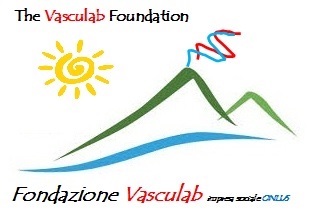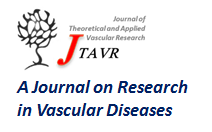DOI: 10.24019/issn.2532-0831
Online ISSN 2532-0831

Journal of Theoretical and Applied Vascular Research
Journal website: http://www.vasculab.eu/jtavr.xml
JTAVR 2016;1(2):101-118

The Klippel-Trenaunay Syndrome

JN Markovic1, BB Lee2, F Passariello3
2Professor of Surgery and Director, Center for the Lymphedema and Vascular Malformations, Division of Vascular Surgery, Department of Surgery, George Washington University Medical Center, Washington, DC 20037, USA.
3Fondazione Vasculab ONLUS, via Francesco Cilea 280 - 80127 Naples, Italy
accepted Mar 23, 2017
EPub ahead of Print: Apr 22, 2017
Published: May 1, 2017
Abstract The Klippel-Trenaunay Syndrome (KTS) includes congenital, low flow vascular malformation(s) that leads to structural and functional anomalies of the vascular system characterized by variability of presenting symptoms and often unpredictable clinical course. Traditionally described pathognomonic triad of findings in KTS patients are capillary malformation, venous malformation, and bone and/or soft tissue hypertrophy. KTS frequently includes the presence of lymphatic malformation(s), as well. Historically, the management of KTS was hampered by the lack of understanding of underlying hemodynamics and pathophysiology responsible for development and progression of KTS symptoms, confusing nomenclature which characterized majority of the early literature discussing KTS, as well as by the absence of established guidelines for KTS management. A relatively recent advancement in the diagnostic and treatment modalities have resulted in better understanding of the pathophysiology and natural history of KTS and represents a fertile environment for improved management of these patients. Multidisciplinary approach and diagnostic algorithm utilized to distinguish vascular malformations from vascular tumors, arterio-venous lesions from low flow vascular malformations have been validated as clinically applicable for making an accurate anatomical and hemodynamic assessment of the lesions found in KTS and serve as a basis for proper treatment selection. It has to be emphasized that treatment of majority KTS patients is palliative and goal oriented. In this manuscript we describe diagnostic protocols and therapeutic algorithms which results in favorable outcomes with an acceptable complication rates in the management of this frequently challenging patient population.
since Apr 18, 2017
 - DOI: 10.24019/jtavr.11 - Corresponding author: Prof. Byung Boong Lee, EMail bblee38@comcast.net
- DOI: 10.24019/jtavr.11 - Corresponding author: Prof. Byung Boong Lee, EMail bblee38@comcast.netback to the JTAVR issue
 © 2016 Fondazione Vasculab impresa sociale ONLUS. All rights reserved.
© 2016 Fondazione Vasculab impresa sociale ONLUS. All rights reserved.